The Battle For Prospect Heights: Humans Against Rats
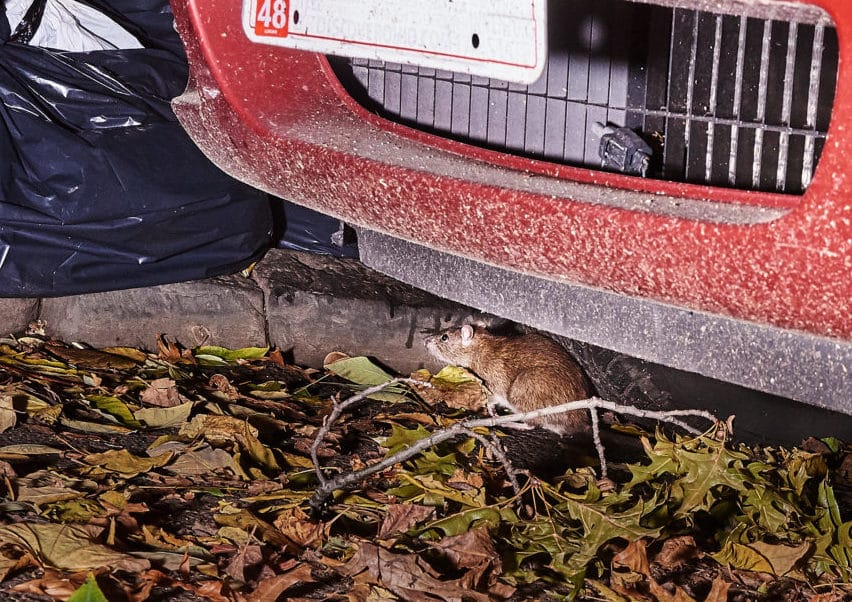

PROSPECT HEIGHTS – Carol Morrison remembers exactly when she decided enough was enough with the rats.
She was walking toward her home in Prospect Heights on Lincoln Place between Washington and Underhill avenues. There were so many rats on both sidewalks, she had to walk in the street.
Suddenly, she stepped over five dead ones, flattened by cars.
“At that moment, I said to myself: This is so unacceptable,” said Morrison. “It was like they were now the community.”
Morrison made it her mission to try and take back the streets. She became the engine behind the Prospect Heights Rat Task Force, a community organization that fights rats and connects the neighbors dealing with them.
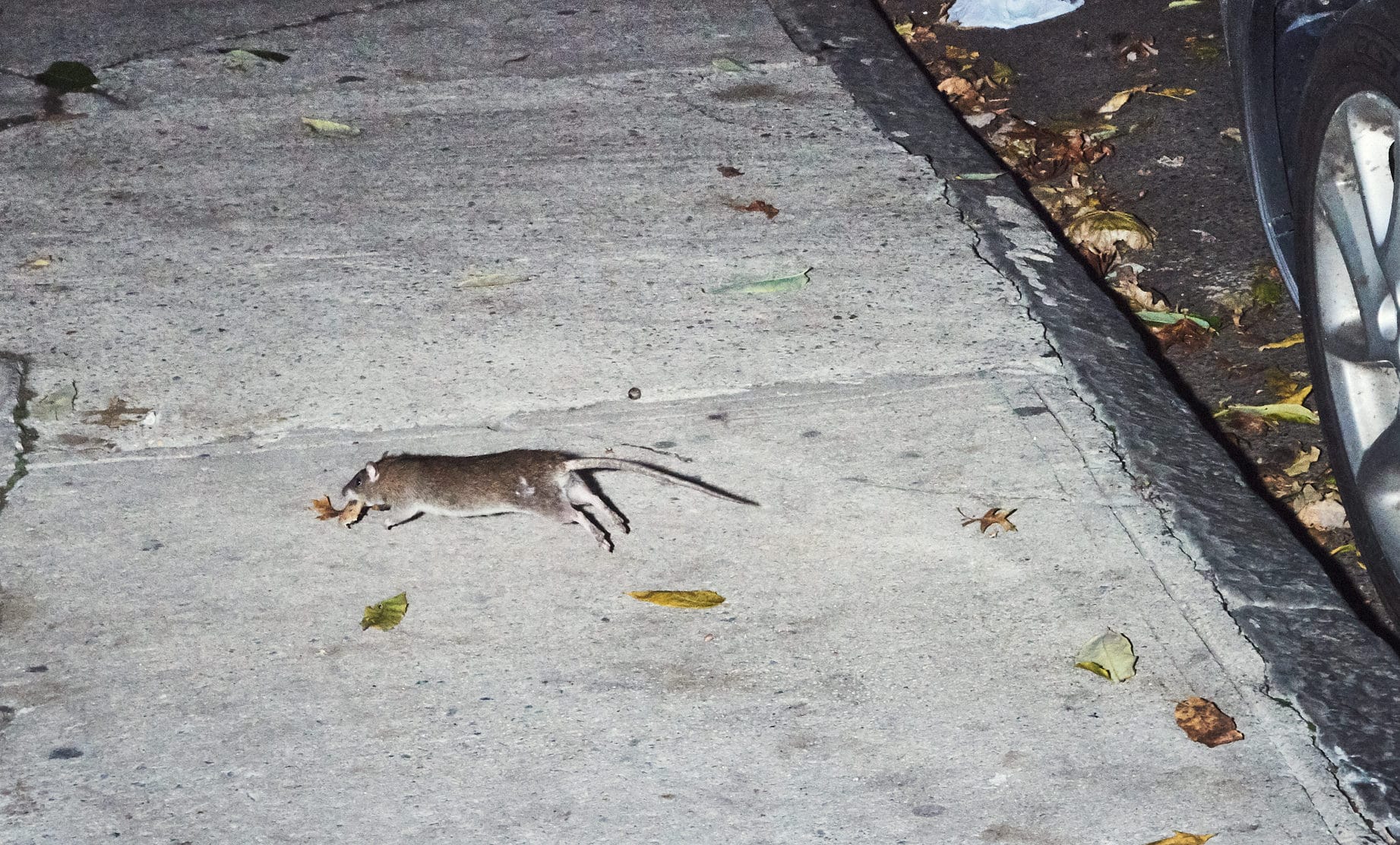
Rats In Brooklyn
Rat complaints in the city peaked in 2017 at 35,075 – attributed by the officials warmer winters that extend the rat breeding season – and have declined by almost 10% to 31,645 last year, according to NYC Open Data. In Brooklyn, 311 complaints dropped by a little more than 7%. But not in Prospect Heights.
Since 2017, Prospect Heights has had the most rat-related 311 rat complaints in all of New York City, putting the 11238 ZIP code with 887 complaints in the lead, over 200 more complaints than the next Brooklyn ZIP code, 11221 – that covers parts of Bed-Stuy and Bushwick, in 2019.
St. John’s Place residents report the rat problems have gotten worse, despite the efforts to combat them. Some residents won’t let their young children play outside. Cars have had their wires damaged from the rat’s razor-sharp teeth and in one case, a fan belt broke while a resident was driving down the block.
Despite its numbers, Prospect Heights was excluded from the $32 million rat mitigation zone program in 2017. The city targeted three zones declared the most problematic for concentrated rat-management – along the Grand Concourse in the Bronx, Chinatown and the Lower East Side in Manhattan, and parts of Bedford-Stuyvesant and Bushwick in Brooklyn. Even the worst blocks of the Upper West Side, which received $750k in rat-mitigation funding in 2017, did not have as many rat complaints.
Department of Health (DOH) touts the program a success, saying it has reduced rat sightings by at least 60% so far, according to a DOH source. But not much has improved in Prospect Heights.
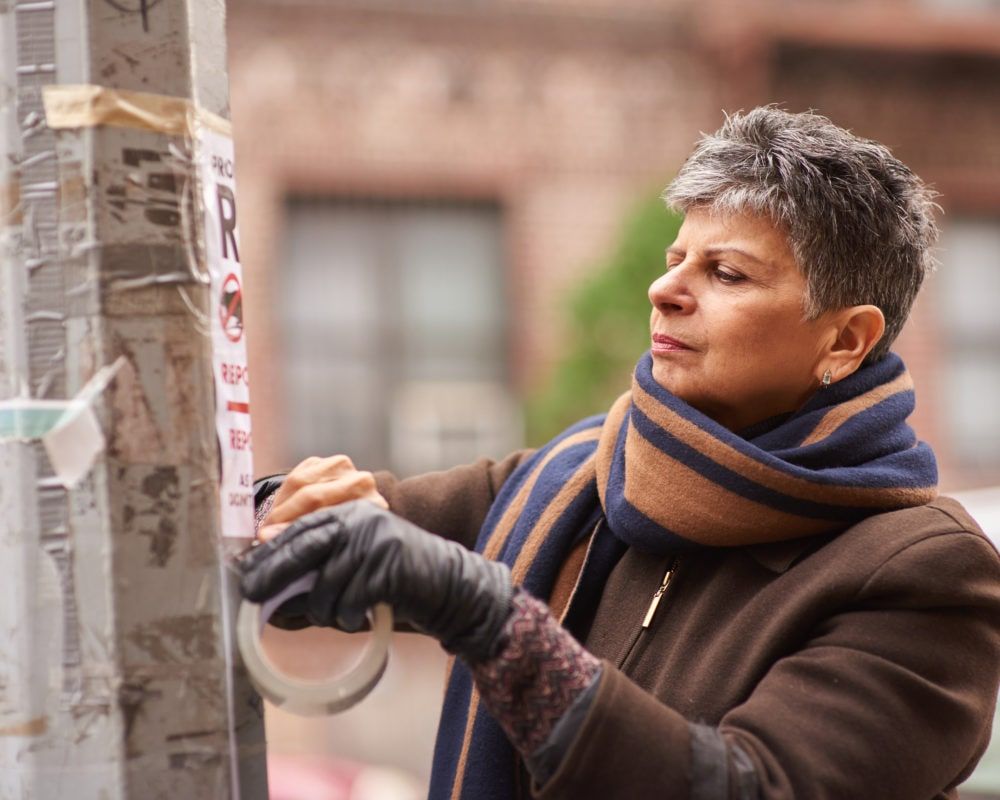
Neighbors Fight A Losing Battle
“We’re on the verge of a public health crisis,” Morrison said. “I’m not sure how much worse it needs to get for the city to do something,” she said, citing the 2017 death of a Bronx resident from leptospirosis, a rare disease spread through rodent urine.
The 64-year-old social worker and artist has lived in Prospect Heights for more than 20 years, and started the community group in May of 2019. She has organized her neighbors, attracted the attention of local lawmakers and city agencies and even motivated some landlords to clean up their acts.
Her first move was to put up signs around the neighborhood: “RATS” in huge letters, imploring residents to report sightings and offenses like poorly managed trash to the city.
The next sign advertised a meeting in the lobby of her co-op building.
Gatherings of the task force soon grew from a few residents on Morrison’s block to include neighbors from the surrounding blocks of St. John’s Place, Eastern Parkway and Park Place. “Suddenly, the Lincoln Place Rat Task Force became the Prospect Heights Rat Task Force,” Morrison said.
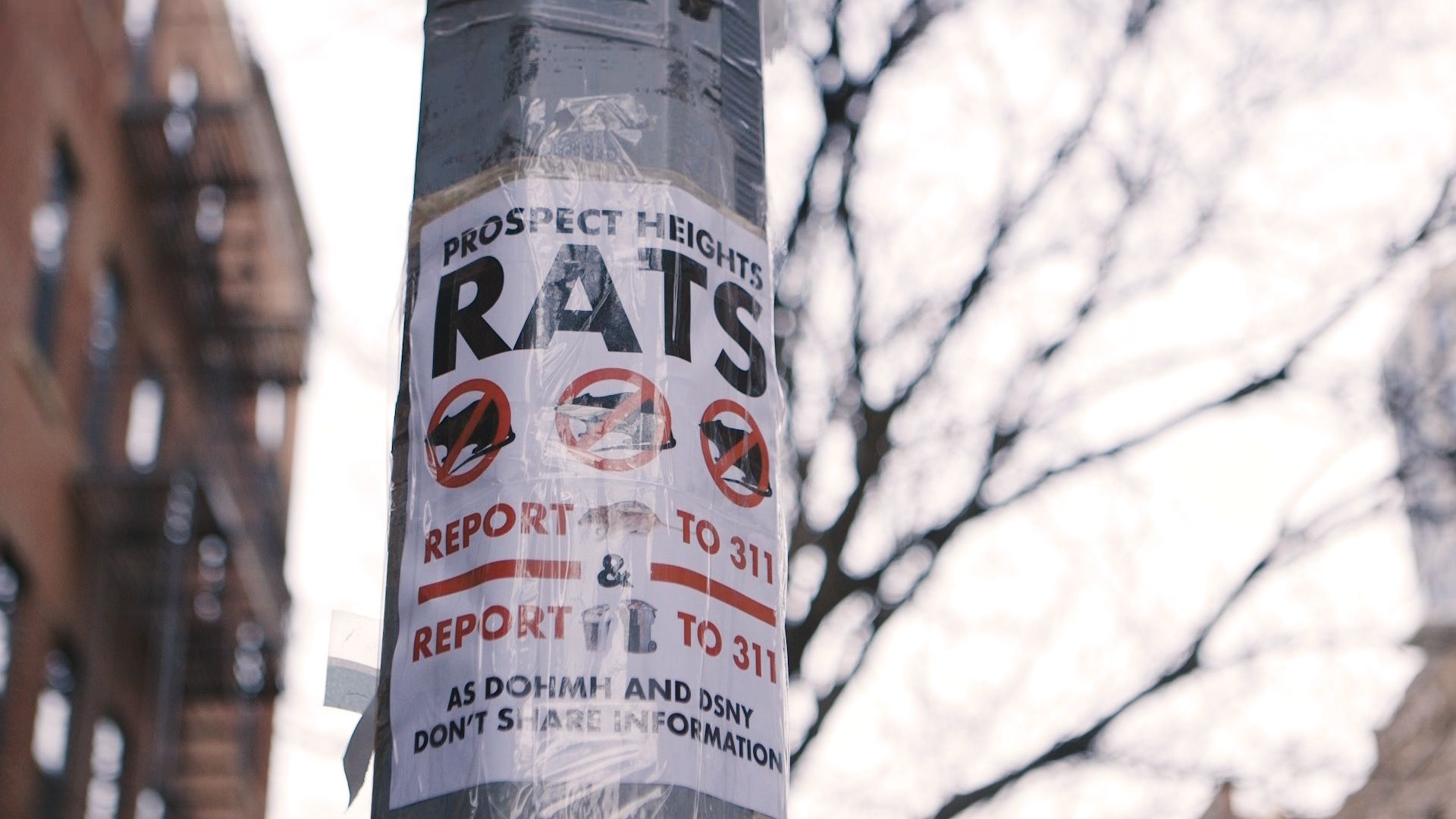
Where did all the rats suddenly come from? Some residents say three construction projects on the neighborhood’s commercial artery, Washington Avenue, could be the culprit, although 311 and city inspection data do not indicate similarly increased rat activity adjacent to the work.
Others point to a building on nearby Eastern Parkway that, according to local lore, kept years of trash in its basement, allowing the rats to develop burrows all over the neighborhood.
Morrison has held more than 12 meetings since May of last year and counts over 100 residents as members. She knocks on doors and makes calls to organize residents and landlords alike. The office of the local council member, Laurie Cumbo (D-Brooklyn), has worked with Morrison to organize two interagency rodent meeting between the city health and sanitation departments. (A spokesperson for Cumbo declined to comment for this story.)
Last summer, residents and the city cleaned up a building thought to be a major source of the rat population. Finally, Morrison thought, the rodents are done.
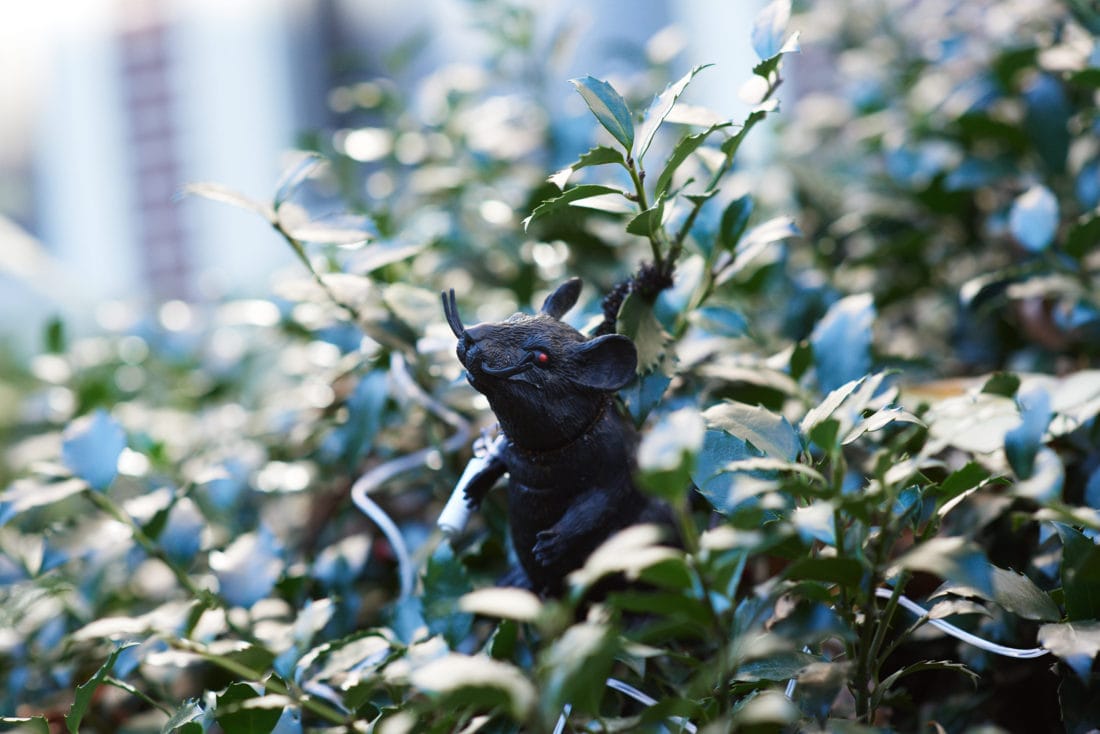
Never Ending Story
Unfortunately, success on one property has only moved the rats farther down the block. Once one property is cleaned up, the rats can easily move between backyards on St. John’s and Lincoln place.
Caroline Bragdon, director of neighborhood interventions for pest control services at the DOH, has been working with residents of these rat-laden Prospect Heights blocks.
“Definitely their activism helped get my team involved,” she said of the task force. Since the summer, Bragdon has instructed an inspector from a nearby rat mitigation zone to also do increased inspections on three blocks in Prospect Heights and issue fines to offending properties.
While the origin story of the rats remains elusive, why they have been able to persist is quite clear. Warmer winters have extended rodent breeding cycles. And too many buildings have too few garbage cans for their size. “You have a lot of really big buildings that have inadequate garbage storage,” Bragdon said.
Some owners have been responsive and fixed conditions, but many “continue to either not respond at all or respond inadequately,” said Bragdon. “What we need is for those residents to help us reach out to their owners and managers, and really demand action.”
Morrison aims to do just that. Meanwhile, she’d like to see the City Council create a stronger enforcement mechanism. One building on Lincoln Place racked up 17 violations in 2019, totaling $8,300 in fines. “From the vantage point of the monthly income of these buildings,” Morrison said, “it’s a ridiculous pittance.”
Robert Corrigan, a renowned urban rodentologist and a former rodent-control research scientist at the city health department, says Morrison is doing exactly what New Yorkers need to do.
Community-led efforts, he wrote in an email, can accomplish more than a city agency, with a level of motivation and commitment embodying “the true spirit of ‘neighborhood.’”
This! Kudos to PH_BK_RATS! Yup: 1) grass roots efforts 2) well organized 3) have a plan 4) smart-surveillance for rat-causative factors & (hopefully) 5) collaboration/support from ‘The City’ = Rat Free 2020. It is NOT via “new” gizmo-traps or yet more poison baiting. ?????️? https://t.co/HKxv4lW5tO
— Bobby Corrigan (@rodentologist) September 5, 2019
Christopher Jacobs, 52, who has lived on St. John’s Place for his whole life, said he’s never seen so many rats. As an owner of a small building on the block, he says “I gotta psych myself up. I cannot be scared of them because I gotta deal with them.”
Denise Dixon, 64, a St. John’s Place resident for 35 years, saw Morrison putting up flyers on her block. Rats had somehow gotten into her car to enjoy a meal of trashed chicken and left the bones behind. “That’s when we started the conversation,” she said.
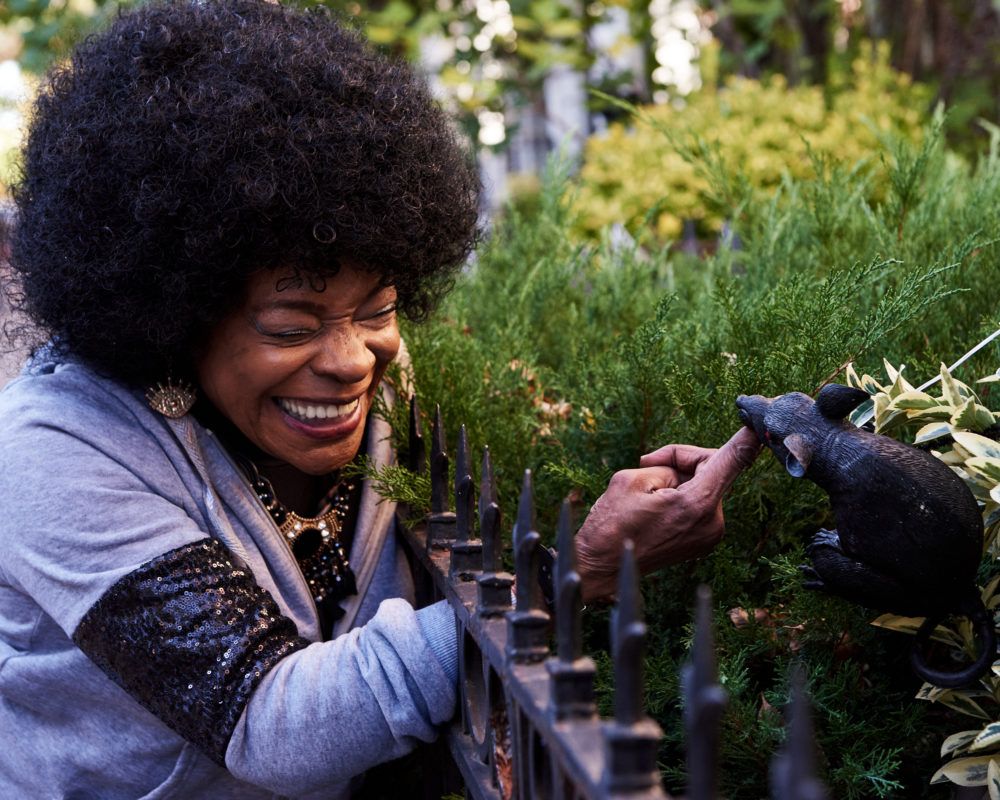
Dixon’s neighbor across the street, Suzanne Chipkin, 31, a non-profit professional and resident of six years, can’t take the rats anymore, either. One night last summer, a rat ran over her husband’s foot on the street. “He was wearing flip flops,” she said.
Chipkin, who saw a task force flyer in July, said she was empowered by seeing that others in the community were taking action. She started calling 311 and elected officials. Still, the lack of noticeable change has Chipkin feeling deflated. “In the scope of problems facing New York City, I do not think this problem is particularly complicated, or particularly expensive,” she said.
Morrison says she’ll keep at it until the rats are gone. “I will send out emails, I will go out today and I will post more posters. I will talk to people and I will further organize my community. And at some point, we will get this addressed.”




